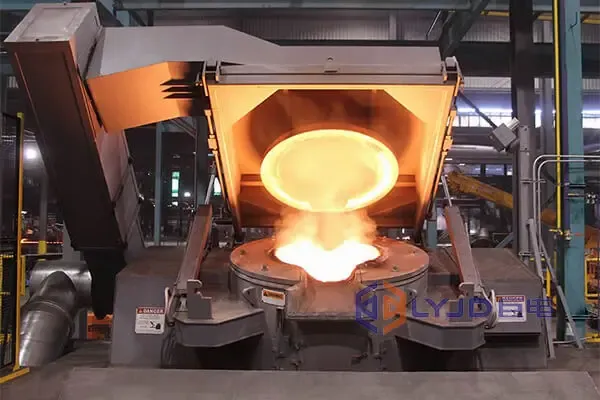Judian medium frequency induction furnace
Email:[email protected]
Tel:86-379-65188091
Phone / WhatsApp / Wechat
008617538889778

There are many types of steel smelting equipment. The following are some common steel smelting equipment
Medium frequency induction melting furnace
Working principle:
Using electromagnetic induction heating, the medium frequency current generates a magnetic field through the coil, causing the metal itself to generate electromagnetic eddy current induction heating, and then melt the metal into liquid.
Advantages:
fast melting speed, high heating efficiency, energy saving and environmental protection, compared with traditional smelting furnaces such as coke furnaces, gas furnaces, oil furnaces and ordinary resistance furnaces, it has obvious advantages. And small size, small footprint, simple operation, easy to move. It also has electromagnetic stirring function, which can make the melt more uniform, which is conducive to reducing impurities, making the melt or casting brighter, and reducing shrinkage and shrinkage.
Application scenario:
Widely used in the smelting and casting of metals such as steel and non-ferrous metals, suitable for small foundries, laboratories, scientific research institutions, etc.
Electric arc furnace
Working principle: The arc discharge generated between the electrode and the charge converts electrical energy into heat energy to melt the charge. Electrodes are usually made of conductive materials such as graphite, and the temperature in the furnace can reach thousands of degrees Celsius.
Advantages: It can process a variety of scrap steel and alloy waste, and has strong adaptability to raw materials; it can accurately control the temperature and chemical composition in the furnace to produce high-quality molten steel; the equipment has a high degree of automation and is relatively easy to operate.
Application scenario: It is one of the main steelmaking equipment in the modern steel industry, often used in large-scale steel production enterprises, and can produce various types of steel.
Vacuum induction melting furnace
Working principle:
The metal is melted in a vacuum environment to avoid chemical reactions between the smelted metal and alloy and non-metallic inclusions, and it can remove harmful soluble gases and pollutants in the liquid molten metal to improve the purity of the metal.
Advantages: It can melt some precious active metals, accurately control the chemical composition of the alloy, and can also better control active elements with strong affinity for oxygen and nitrogen. The alloy materials produced have the advantages of high purity and high uniformity, and are suitable for aerospace, national defense and other fields with extremely high requirements for material performance.
Application scenarios: Mainly used for the production of high-temperature alloys, ultra-high-strength steel, stainless steel and other alloys for special purposes required by aerospace, missiles, rockets, atomic energy and electronics industries.
Electroslag remelting furnace
Working principle:
Use the heat energy generated by the current passing through the high-resistance slag to remelt the metal. The electrode is inserted into the slag, and the heat generated when the current passes through the slag melts the metal. The molten metal solidifies in the water-cooled crystallizer to form an ingot.
Advantages:
The melting, casting and solidification of the metal are all achieved in a relatively pure environment, which can reduce the pollution of the atmosphere to the molten steel, reduce the increase in hydrogen and nitrogen in the molten steel and the secondary oxidation of the steel; it has good thermodynamic and kinetic conditions for metallurgical reactions, which can make the structure of the ingot dense and uniform; a thin and uniform slag shell is formed between the water-cooled crystallizer and the ingot, ensuring the smooth surface of the remelted ingot.
Application scenarios: Commonly used for refining various high-quality steel castings such as alloy structural steel, heat-resistant steel, bearing steel, forging die steel, high-temperature alloy, precision alloy, etc.
Cupola
Working principle:
The heat generated by the combustion of fuels such as coal is transferred to the metal charge in the furnace to melt it. Cupolas are generally divided into front furnaces and rear furnaces. The front furnace is used to store and discharge molten iron, and the rear furnace is used to burn fuel and heat the charge.
Advantages: The equipment structure is relatively simple and the investment cost is low; it can be produced continuously and the production efficiency is high; the requirements for raw materials are relatively low, and various types of iron ore and coke can be used.
Application scenario: In the past, it was a commonly used smelting equipment in the foundry industry, but due to its high energy consumption and environmental pollution, it was gradually replaced by other more advanced smelting equipment. It is still used in some small foundries or specific production scenarios.